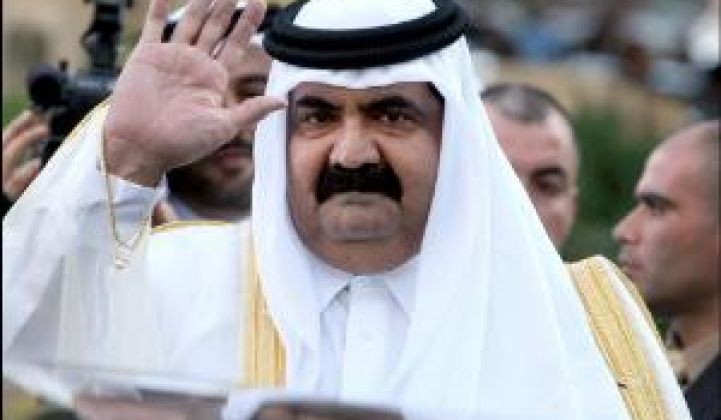SolarWorld was able to win its fight to have tariffs imposed on Chinese solar panels -- but relief from unfair Chinese trade practices may not come soon enough for the German firm.
The financially troubled solar panel manufacturer is working on a deal with an investor from Qatar, according to Reuters. The plan will have creditors assume ownership of the company "in a debt-to-equity swap." According to reports, shareholders could end up with less than 5 percent ownership in the firm in a deal requiring a minimum of $250 million to secure the debt.
SolarWorld, at one time one of Germany's largest solar companies, now has long-term debt of close to $1 billion in a savagely competitive solar market. The firm recently postponed its earnings call.
In January, SolarWorld had to warn bondholders of a debt restructuring, writing that "serious adjustments on the debt side are necessary, in particular with regard to the bonds (ISIN XS0478864225 and ISIN XS0641270045) and the assignable bank loans." When the terms "appointed restructuring expert" and "expert in German insolvency law" are used in press releases by German public companies, it is almost always a very bad sign. Q.Cells and a number of other German firms have faced debt restructuring or insolvency in the solar industry's consolidation and have used the same foreboding language.
SolarWorld is among the many solar firms -- European, Asian, and American -- that have been bested by seismic changes in the industry. Here's a survey of the carnage.
In 2011, the U.S. arm of Germany's SolarWorld formed CASM (Coalition for American Solar Manufacturing) to pursue and eventually "win" the case for imposing stiff anti-dumping tariffs on the importation of Chinese solar cells. We covered the 2012 ruling by the Department of Commerce as we followed every twist of the international legal case.
A notable recent piece of news from SolarWorld was the company's sale of the 21-megawatt Highlander solar PV project to Duke Energy. The project is near Joshua Tree National Park in Southern California and uses SolarWorld panels and trackers. Perhaps this is a strategic shift by SolarWorld to engage the downstream market and emulate the First Solar and SunPower vertically integrated EPC model.
In the meantime, SolarWorld is running out of time to restructure itself, deal with its debt, and find a way to survive.



